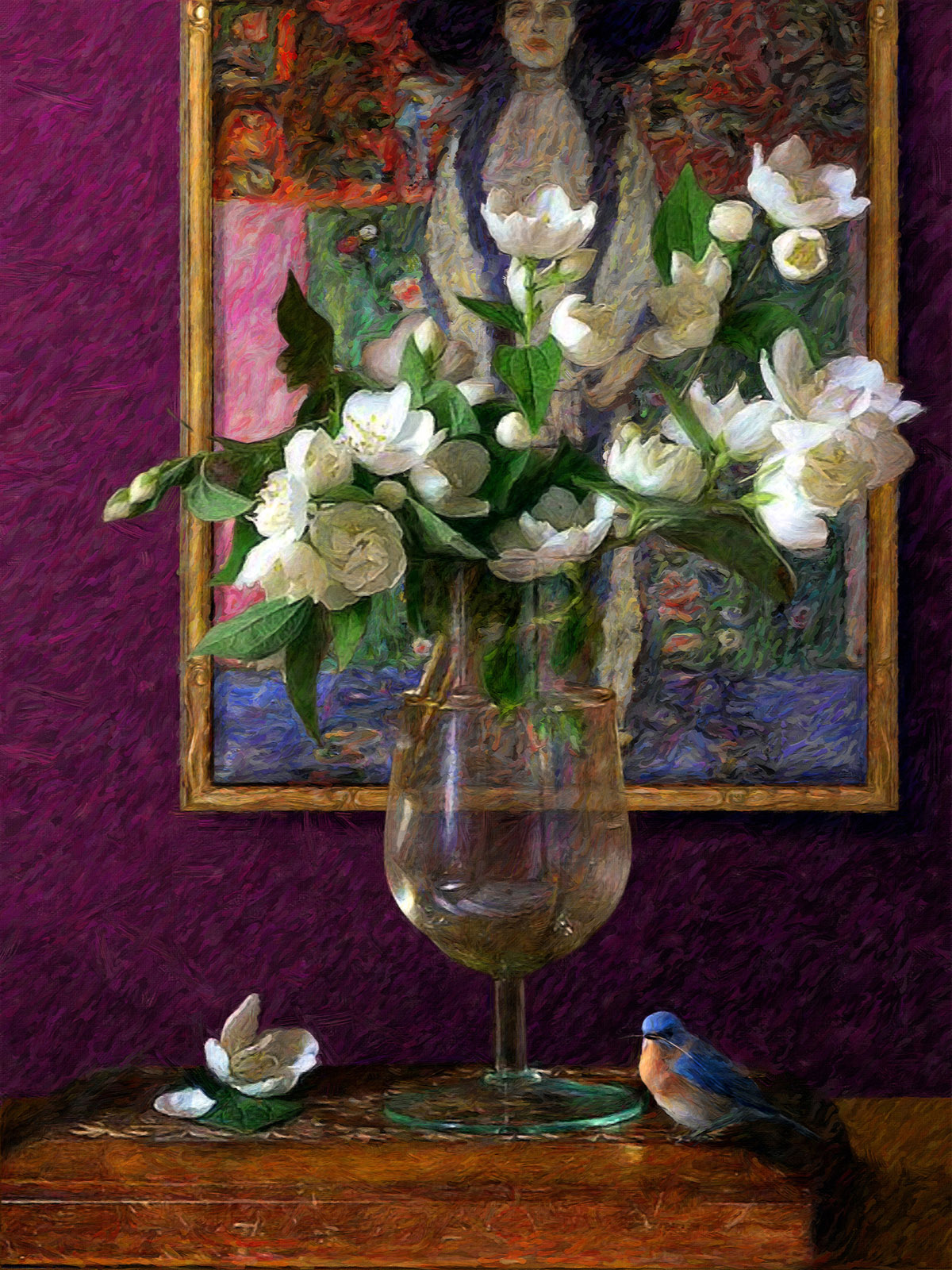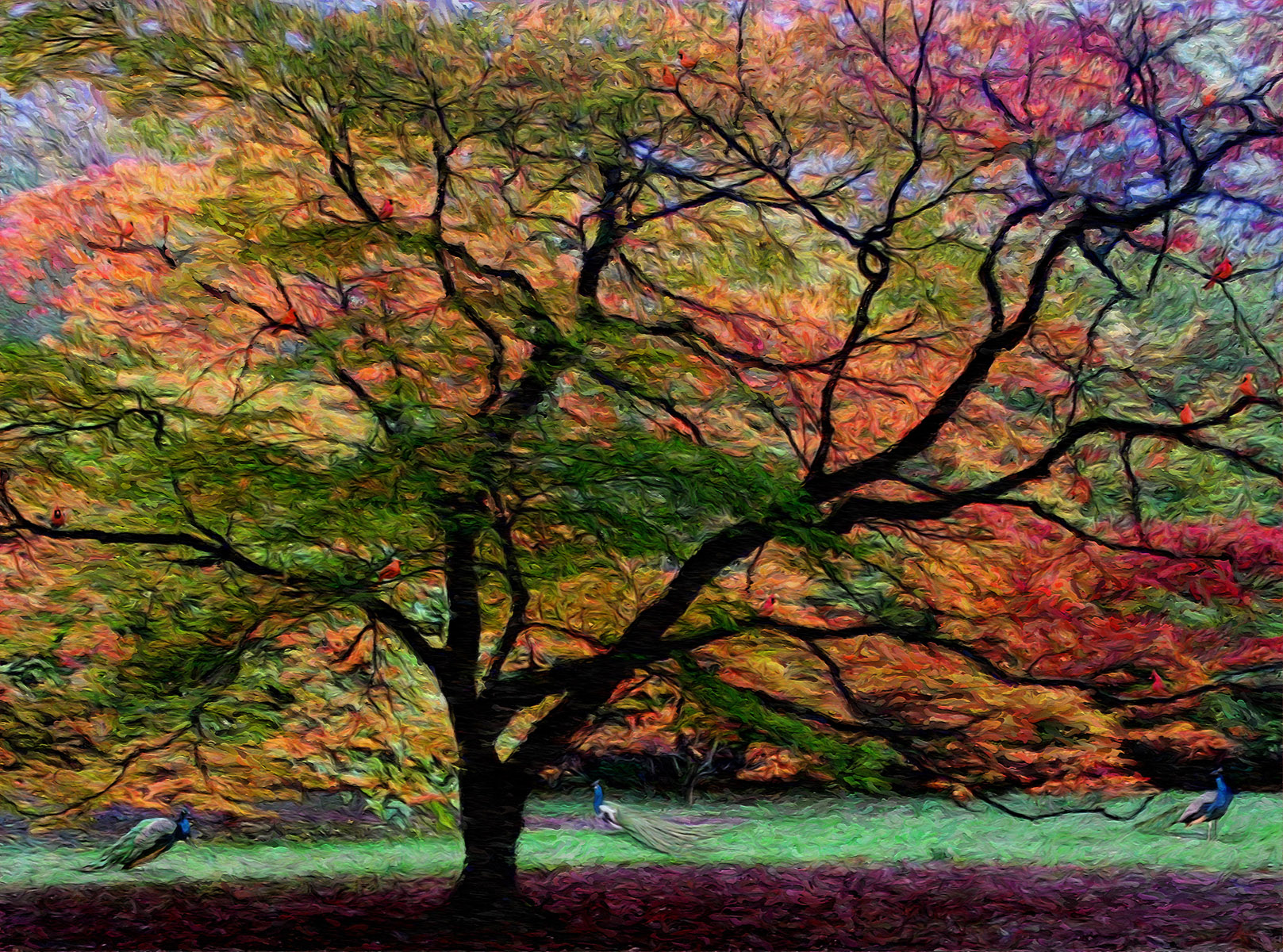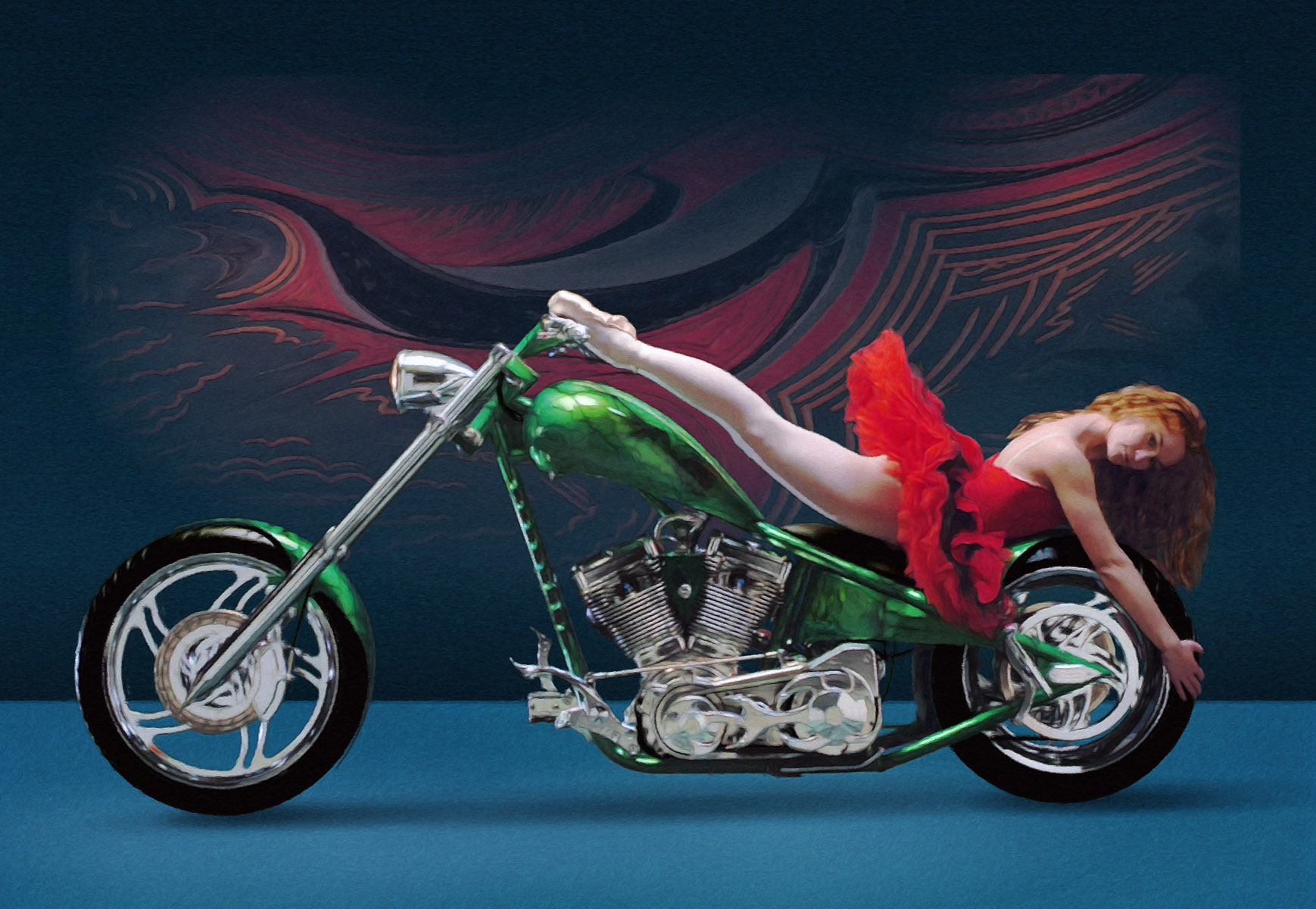Bio
I was drawing and painting before I went to school. In fourth grade, my art teacher gave me a large book with amazing art reproductions on classical artists. The ones I loved most were Rembrandt, Michelangelo, and especially Vermeer (I copied his Young Woman with a Water Jug many times) to encourage me to try more in depth work. The drawings and paintings I copied fueled my desire to be a working artist. When I was twelve I discovered a book of beautifuly colored Japanese woodcut prints my grandmother had in her large library. This began my fascination with Japanese art and culture, and forming my ideas about line and color. It was through the study of Japanese art that led me to Impressionism.
Though I was raised in a small town, I was lucky it had a large university that allowed access to its libraries. There I found books on the French impressionist artists (my favorites: Renoir, Monet, Cezanne, Morisot, Manet, and Cassatt) and two American impressionists that really caught my attention: Frank Weston Benson and Edmund Tarbell. I copied their work, and researched as much information about their methods and use of color, mediums and brushes as was available at the time. (Not long ago, I painted a still-life series I called "Bird and Artist": fruit and flowers, ceramic and glass, and a bird as a central figure with a partially revealed painting hanging on a wall behind it—all the paintings came from my study of the above mentioned artists' work in my early to mid teens.)
"Bluebird Klimt" (Study No. 5)
from my "Bird and Artist" series

for sale on Etsy
At sixteen I discovered another art form that was to be my career for thirty-five years — classical ballet. During the first twenty of those years I continued with my visual arts, especially in the summers when we were on layoff. On an average I completed about a dozen works a year, mostly in the impressionist style, interspersed with forays into cubism and French expressionism. During this time I never looked for my own style or a particular subject matter (though I favored the human form—even in my landscapes), nor did I do shows or seek representation, I was just interested in exploring the possiblities of the medium.
When I retired as a professional dancer, I took a year to evaluate the visual arts as a career, but another opportunity came to me as an artistic director and choreographer. Not long after this, I bought my first computer with a high end graphics monitor and a wacom tablet. For the next 15 years the computer absorbed all my visual arts urges. It was easier to work on my drawing skills with the computer, as my duties as artistic director absorbed most of my life with very little down time. After retiring from my last position as artistic director, my enthusiasm for the PC as an art medium waned and I found myself drawn back to the tactile feel of brush and paint. I began to work exclusively in encaustics, and, as I was living in India at the time, I was inspired by the luminosity of ancient wax paintings. Eventually I returned to oils, but what I took away from my encaustic work dramatically changed my work in oils: canvas mounted on a wood panel for a sturdy support, using a hand muller to make my own paint to control texture and the heavy "butter-i-ness" I sought in the medium, and extensive use of the palette knife.
At this time, I am exploring another step in my ever growing need for plasticity in my work: base-relief sculpture cast in hand made paper, then painted in oil. (See my construction process here: Construction Process. At this time my greatest concern is the colorization of the sculpted paper. I may begin to leave it white or... possibly having the sculpture cast in bronze, which would relieve me of the need for colorization (other than the use of patinas). Anyone who would be interested in such a commission, please contact me.
You can find a video of my latest sculpture project on this page: Study No. 3 from my "Apple on a Beach" series.
Artist
As an artist I look for the silent, the unseen, the unexpressed as being as telling as the spoken, the visible, the obvious. Dogen-zenji said, "... light implies the presence of the shadows and it is the shadows that are loved". It is the underlying beauty waiting to be discovered that gives me my most satisfying moments as an artist: the range of expression hinted at, touched on, rather than depicted. When I create, there are always other forces at work, so I am open and allow for surprises. Making workable choices in a crucible of informative mistakes becomes my guide in the face of what cannot be seen, only hinted at, or in an emotional sense, felt. My creativity lives in an arena where mistakes are not only possible but necessary.

Peacocks and Cardinals from my "Luxuriant Spring" collection.

The Rendezvous from my "Mediterranean" landscape series.
Dance Artist
I began my ballet studies at the Alabama School of Fine Arts. Over a twenty year period I danced as a soloist and principal with many ballet companies: Ballet UAB, Cincinnati Ballet, Berlin Ballet (Deutsche Oper in West Berlin), Nevada Ballet Theatre, Ballet Austin and as a principal guest artist with the Serbian National Theatre in Yugoslavia.
For ten years I was the Artistic Director for Northern Plains Ballet (NPB), a full regional company and pre-professional school that eventually became a professional ballet company. During my time with NPB, I was awarded a certificate of excellence by the Governor of North Dakota for my educational contributions to the Bismarck Public Schools, and two NEA grants.

"Slide Saddle" from my "Moto Ballet" series
Favorite Quotes
Work like you don't need money, love like you've never been hurt, and dance like nobody's watching.
Art is a lie that makes us realize the truth, at least the truth that is given to us to understand.
Only a biker knows why a dog sticks his head out the window.
Unknown
Those who dance are considered insane by those who can't hear the music.
The classical world emerges from the quantum in a comprehensible way: you might say that classical physics is simply what quantum physics looks like at the human scale.
We make our decisions. And then our decisions turn around and make us.
If you can’t explain it simply, you don’t understand it well enough.
Unus pro omnibus, omnes pro uno (One for all, and all for one)
Unknown
Time is nature’s way of keeping everything from happening all at once.
Unknown original (multiple sources)
Everyone is exactly the same in one way: they believe they are different from everyone else.
Unknown
The difference between stupidity and genius is that genius has its limits.
True forgiveness sees there is no need for forgiveness.
I don't want to be a part of history, only wake from it.
Nothing real can be threatened. Nothing unreal exists. Herein lies the peace of God.
Anger (frustration, sadness, etc) at another for hurting your feelings, the movement towards peace is to see it is only the image you have made for yourself that is hurt. Essentially, there is no "you" to be hurt. Such freedom. How marvelous!

